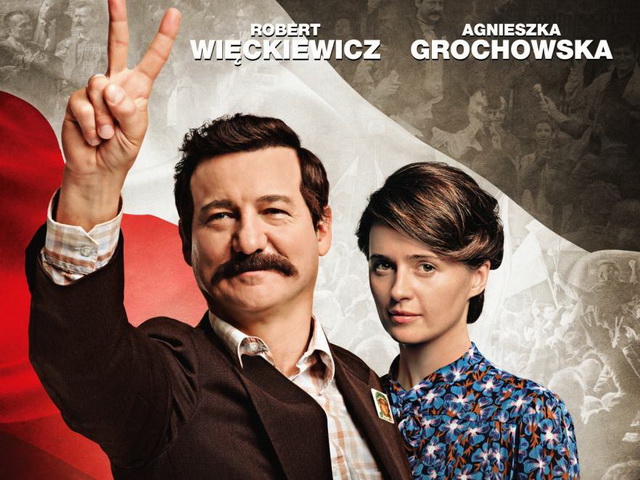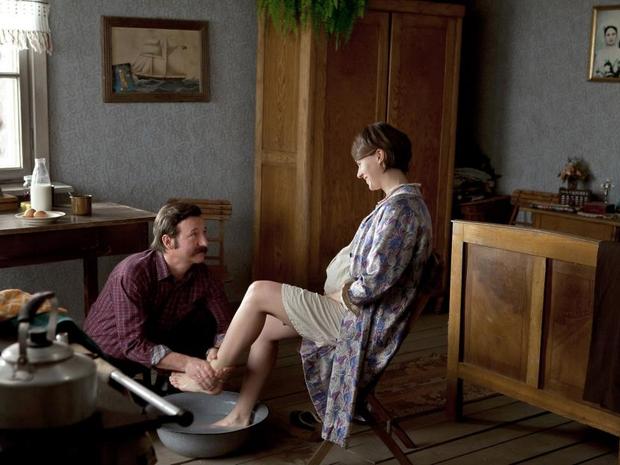It’s impossible not to be swept away by the power of Wajda’s Wałęsa: Man of Hope which has just appeared on cinema screens in Britain.
It is the final part of the great film maker’s trilogy which begins from portraying the hypocrisy of 1950s Polish communism in Man of Marble (1971) and proceeds to interpret the roots of the bloody confrontations with the system in Gdansk in 1970 in Man of Iron (1981). The latest Wajda film shows the last twenty years of communism in Poland through the actions of Lech Wałęsa whose life wasn’t far removed from that of the fictional Man of Marble and Man of Iron of the previous films. The two decades on which the film focuses are opened by original footage of police slaughtering the strikers of December 1970 and conclude with Wałęsa’s rousing address to the US Congress in November 1989.

The Solidarity leader is the main focus of the film but it isn’t definitely a hagiography. It is a ‘warts and all’ story which portrays a cocky and opinionated man, nevertheless very brave, whose intuition helps him to correctly judge the political situation. He inspires others – workers and intellectuals – who elect him as the leader of Poland’s first independent trade union. He caused the first crack in the system that progressively widened until it reached the Berlin Wall. His fight for democracy coincided with the election of the Polish pope, John Paul II, whom Wałęsa viewed as the Solidarity spiritual leader and whose influence on the birth of Polish democracy is indisputable.
Throughout the film Wajda stresses that Wałęsa is an electrician, not a political visionary, a man with basic education (and such tastes – who never read a book beyond page five), but with an above average intelligence, who with ox-like obstinacy presses ahead believing that the oppressed man in the street thinks like him. The world is fascinated with him and the visit of Oriana Fallaci, one of Italy’s most controversial political journalists, who interviewing him alternatively flatters and mocks him, is the proof of this.
An unexpectedly beautiful thread of the film shows Walesa’s relationship with his wife Danuta. It starts with an intimate scene of the young Wałęsa washing the feet of his very pregnant wife who is expecting the couple’s first child. The performance of both Robert Więckiewicz and Agnieszka Grochowska playing the Wałęsas gives credence to the belief that it was a strong and passionate union which not only produced seven children but also supported each other in the most difficult and dramatic moments of their lives.

Wajda’s efforts to make the film historically accurate and true at the personal level are evident in almost every scene. He seamlessly knits together historical footage – both black and white and also the orange-brown early ‘colour’ reels – with the scenes from his film. At the famous Round Table debate Robert Więckiewicz’s Wałęsa sits at the negotiating table with the real Tadeusz Mazowiecki, the last prime minister of the communist government and the first head of the new democratic one.
Like all other films in Wajda’s trilogy, Wałęsa, Man of Hope is a poignant history lesson, particularly important for the generations who never experienced the dread watching the tanks rolling into the streets of Warsaw on Sunday morning of 13 December 1981 or the desperation of facing shop shelves that housed only bottles of vinegar.
